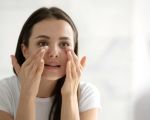- 1-Understanding-what-causes-screen-glare-and-its-impact
- 2-Environmental-factors-contributing-to-screen-glare
- 3-Practical-tips-to-reduce-glare-from-screens-effectively
- 4-Technology-and-accessories-that-help-minimize-screen-glare
- 5-Real-life-examples-and-user-stories-showing-glare-reduction-success
- 6-Professional-recommendations-for-long-term-eye-health
1. Understanding What Causes Screen Glare and Its Impact
Screen glare is a common annoyance caused by reflections of bright light sources on digital screens such as computers, smartphones, and TVs. This glare can make it difficult to see content clearly and forces your eyes to strain more than usual. The impact of excessive glare is not just discomfort—it can lead to headaches, blurred vision, and long-term eye fatigue.
Glare typically occurs when a strong light source—such as sunlight or overhead lighting—hits the screen at an angle, reflecting back into your eyes. The type of screen and its finish (glossy vs. matte) can also influence how much glare you experience. Understanding the cause is the first step in learning how to reduce glare from screens effectively.
2. Environmental Factors Contributing to Screen Glare
Several environmental elements contribute significantly to screen glare:
2.1 Lighting Conditions
Bright overhead lights or direct sunlight through windows often create the most problematic glare. For example, a desk positioned facing a window can become virtually unusable during certain times of the day because of intense reflections.
2.2 Screen Positioning and Angle
The way you position your screen influences glare exposure. Screens angled to face light sources head-on reflect more light directly into your eyes, worsening glare effects.
2.3 Room Setup and Surface Materials
Shiny surfaces like polished desks or glossy walls can reflect light onto your screen, indirectly increasing glare. Dark, matte finishes on furniture and walls can help reduce this problem.
By assessing and adjusting your environment, you can make a significant difference in reducing unwanted reflections.
3. Practical Tips to Reduce Glare from Screens Effectively
Here are actionable strategies you can apply right now to reduce glare and protect your vision:
3.1 Adjust Screen Brightness and Contrast
Calibrating your screen settings to balance brightness and contrast reduces eye strain caused by harsh reflections. Avoid max brightness unless necessary, and consider using night mode or blue light filters for additional comfort.
3.2 Reposition Your Workspace
Move your desk or change the screen angle to avoid direct light sources hitting the screen. Ideally, position your screen perpendicular to windows to minimize reflected glare.
3.3 Use Window Treatments
Installing blinds or curtains can control natural light and reduce sunlight glare. Sheer curtains are particularly useful for diffusing bright light without darkening the room excessively.
3.4 Reduce Overhead Lighting
Switching to softer, indirect lighting or using lamps instead of harsh ceiling lights helps lower glare intensity.
3.5 Take Regular Breaks
Following the 20-20-20 rule—looking at something 20 feet away for 20 seconds every 20 minutes—can alleviate eye fatigue caused by glare and prolonged screen time.
4. Technology and Accessories That Help Minimize Screen Glare
Modern technology offers several tools designed to combat screen glare:
4.1 Anti-Glare Screen Protectors
These thin films attach to your device’s screen, scattering reflected light to reduce glare without compromising display clarity. They are especially useful for laptops and tablets.
4.2 Matte Screen Displays
Choosing devices with matte screen finishes inherently reduces glare compared to glossy screens. Many professional laptops offer matte options ideal for bright environments.
4.3 Specialized Eyewear
Glasses with anti-reflective coatings or blue light filters help reduce glare and eye strain. Some users report significant improvement when wearing such lenses during extended screen use.
For those looking to explore quality anti-glare solutions or eyewear, Eye Docs offers a curated selection of products and expert guidance tailored to individual needs.
5. Real-Life Examples and User Stories Showing Glare Reduction Success
Consider Jane, a graphic designer who struggled with intense screen glare while working near large windows. By repositioning her desk and installing adjustable blinds, she reduced reflections drastically. Additionally, applying an anti-glare screen protector and adjusting her monitor’s angle made long workdays more comfortable and productive.
Another case involves Michael, who experienced frequent headaches due to digital eye strain. After consulting professionals, he switched to matte screen devices and invested in anti-reflective glasses recommended by Eye Docs. The combined approach not only diminished glare but improved his overall visual comfort and focus.
These stories highlight how practical changes and the right tools can transform daily screen use from a source of discomfort into a more pleasant experience.
6. Professional Recommendations for Long-Term Eye Health
Experts emphasize the importance of managing screen glare to prevent chronic eye strain and maintain eye health. Regular eye exams can detect early signs of strain and help tailor protective measures specifically for you.
Beyond environmental and technological fixes, professionals suggest maintaining proper posture and ensuring good ambient lighting to support healthy vision. Consistent breaks and eye exercises are also valuable practices to incorporate into your routine.
For personalized advice and to access the best eye care products and services, visiting Eye Docs can provide you with expert support tailored to your lifestyle and needs.








